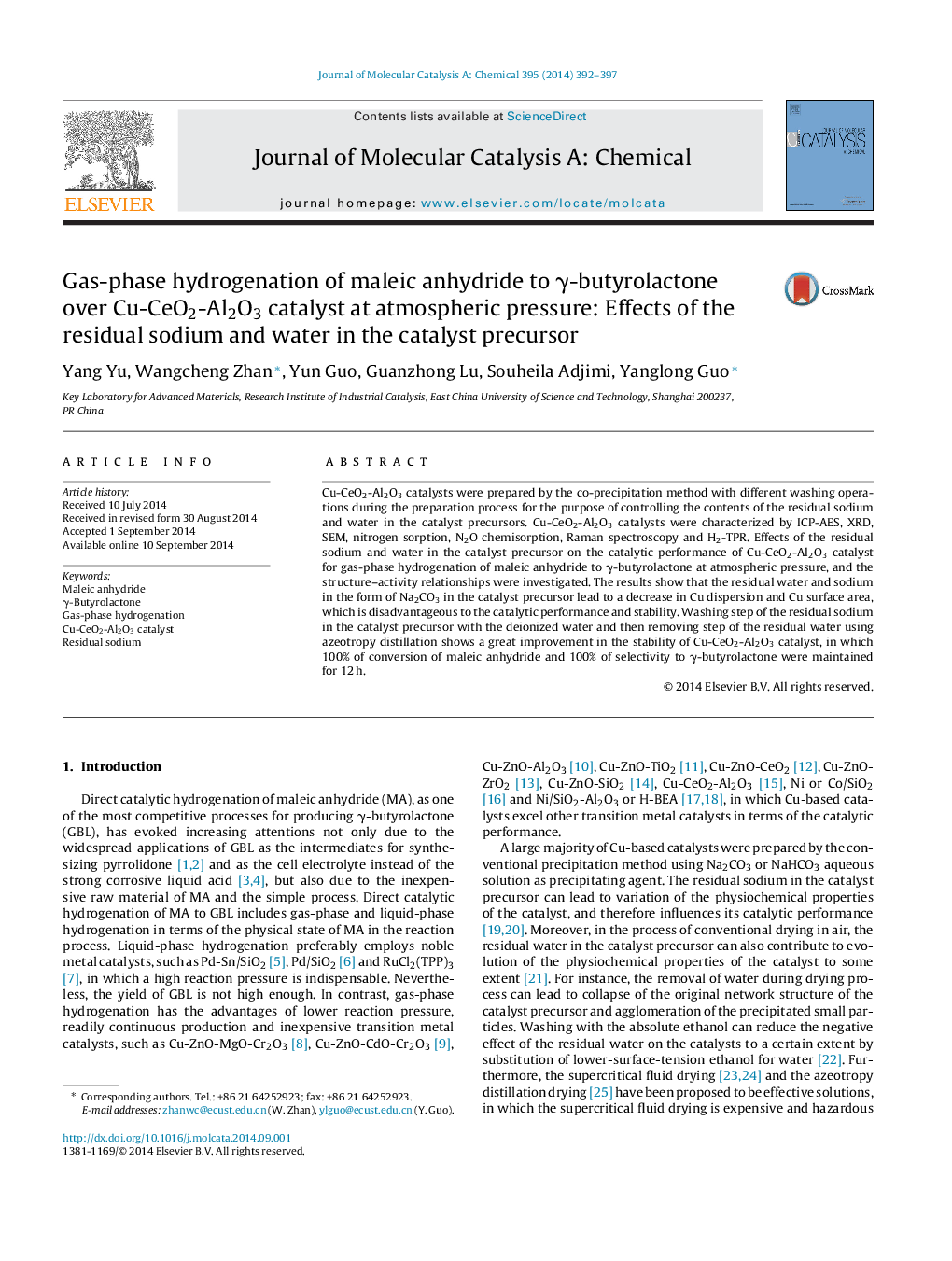| کد مقاله | کد نشریه | سال انتشار | مقاله انگلیسی | نسخه تمام متن |
|---|---|---|---|---|
| 65337 | 48388 | 2014 | 6 صفحه PDF | دانلود رایگان |

• Cu-CeO2-Al2O3 catalyst has better catalytic performance.
• Removal of residual sodium and water improves catalytic performance and stability.
• Higher Cu dispersion and Cu surface area are advantageous.
Cu-CeO2-Al2O3 catalysts were prepared by the co-precipitation method with different washing operations during the preparation process for the purpose of controlling the contents of the residual sodium and water in the catalyst precursors. Cu-CeO2-Al2O3 catalysts were characterized by ICP-AES, XRD, SEM, nitrogen sorption, N2O chemisorption, Raman spectroscopy and H2-TPR. Effects of the residual sodium and water in the catalyst precursor on the catalytic performance of Cu-CeO2-Al2O3 catalyst for gas-phase hydrogenation of maleic anhydride to γ-butyrolactone at atmospheric pressure, and the structure–activity relationships were investigated. The results show that the residual water and sodium in the form of Na2CO3 in the catalyst precursor lead to a decrease in Cu dispersion and Cu surface area, which is disadvantageous to the catalytic performance and stability. Washing step of the residual sodium in the catalyst precursor with the deionized water and then removing step of the residual water using azeotropy distillation shows a great improvement in the stability of Cu-CeO2-Al2O3 catalyst, in which 100% of conversion of maleic anhydride and 100% of selectivity to γ-butyrolactone were maintained for 12 h.
Figure optionsDownload high-quality image (120 K)Download as PowerPoint slide
Journal: Journal of Molecular Catalysis A: Chemical - Volume 395, December 2014, Pages 392–397